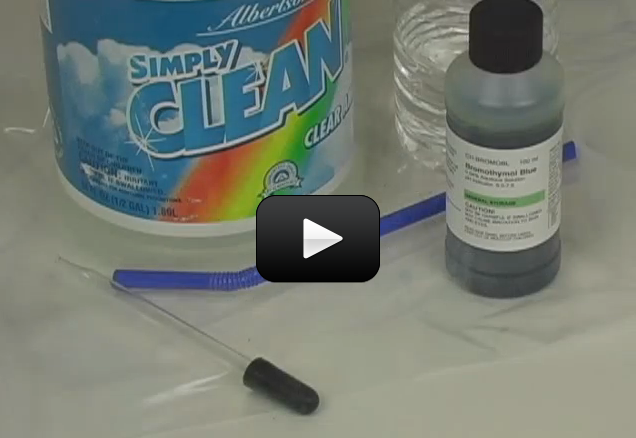An oxygen and carbon dioxide exchange takes place in your bloodstream. When you breathe air into your lungs it brings in oxygen, which is carried from your lungs by red blood cells in your bloodstream. Cells of your body use the oxygen and carbon dioxide is produced as waste, which is carried by your blood back to your lungs. You exhale and release the C02. You will study this exchange in today’s lab.
You will be using a pH indicator known as bromothymol blue. When you exhale into a baggie, the carbon dioxide will react with water in the bag. This reaction produces carbonic acid, which starts to acidify the water. More breathes in the bag equal more carbon dioxide, which equal a lower (more acidic) pH. You will notice the bromothymol will turn green when the pH of the water is right about 6.8 and it will turn yellow when the pH drops further to 6.0 and lower.
Please login or register to read the rest of this content.


No, please use the supplies listed.
could you use baking soda instead of ammonia ?????????????
That’s very strange. It sounds like you might have something else impacting the results. Were you able to duplicate this effect?
We did not have the bromthymol blue so we used the ph tester kit for our fish tank. However the more we blew into the water the more blue it became. We used baking soda instead of ammonia to change it back to blue from a yellow after adding vinegar. Seems to be opposite results. Co2 made it more basic or blue.
This one isn’t as dangerous as the rest of the chemistry expts you’ll find on this site, most of which goggles are required. They even make special ones that fit over glasses! As a science teacher, I always like to err on the side of safety in case something unexpected happens… but of course it’s totally up to you. Personally, I enjoy my eyeballs and do what I can to keep them safe, even at the expense of looking a little goofy. 🙂
I was just wondering since it makes since to have to use goggles but at a local museum I went to a science camp and they told me I did not need goggles even though we did experiments like this one.
If you’re working with chemicals, the answer is always YES because glasses don’t protect you from splash. Ever notice how goggles fit the contour of your face? That’s because it’s sealing your eyes all the way around, not just in front of your eyes.
I wear glasses so would I still need goggles?